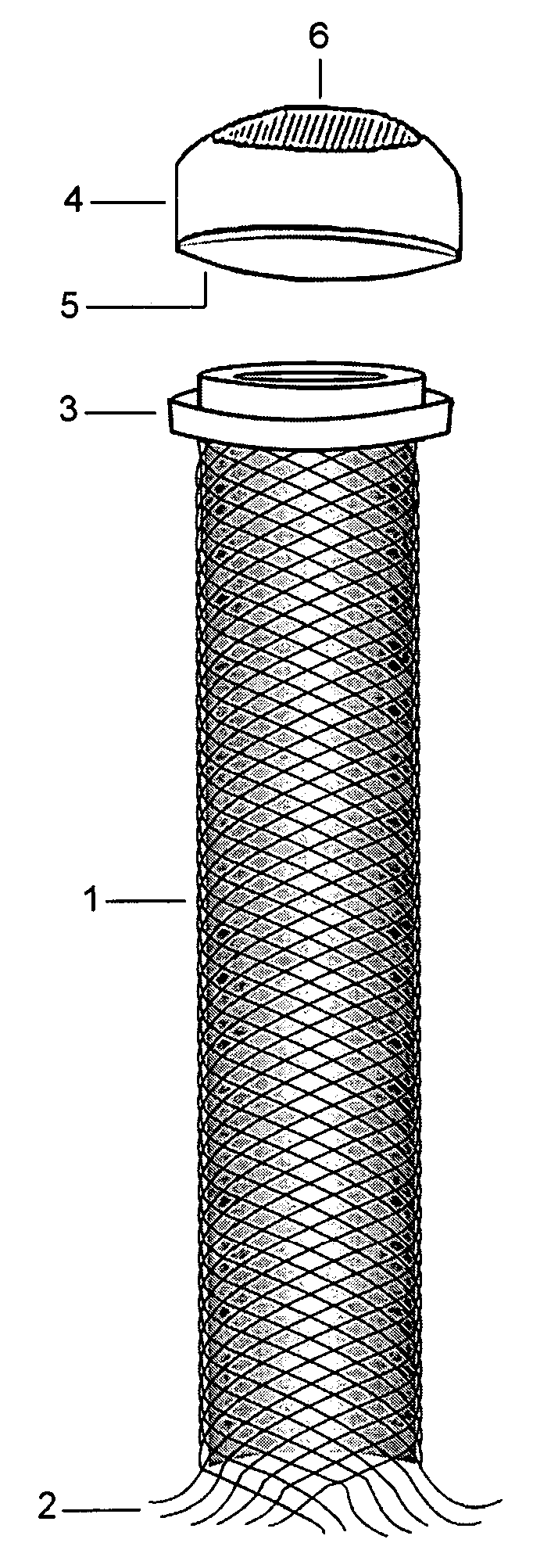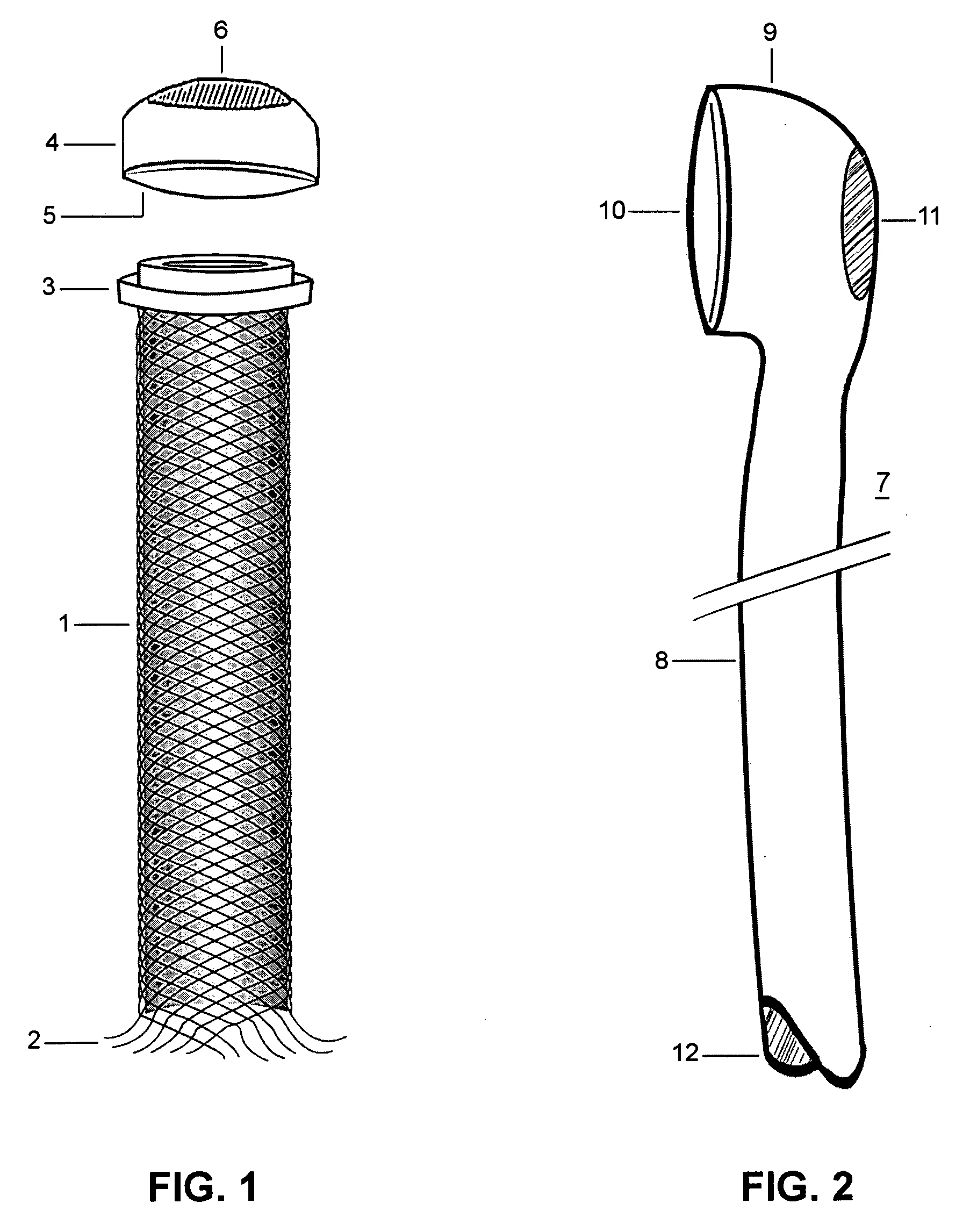Implantable duct system connecting the intrahepatic portal vein to the femoral vein for establishing a subcutaneous porto-systemic shunt and simultaneously providing a durable access to the portal vein
- Summary
- Abstract
- Description
- Claims
- Application Information
AI Technical Summary
Benefits of technology
Problems solved by technology
Method used
Image
Examples
Embodiment Construction
[0036] The system is composed of: a duct (1), and a shunt tube (7) when attached together they form continuous hollow channel (FIG. 3).
[0037] The said duct (1) is a tubular mesh constructed from highly flexible metal (Nitinol) and covered by a thin membrane of expanded Polytetrafluoroethylene (ePTFE). The said duct has two opened ends; the inner end (2) is formed by the edges of the said tubular mesh (1) which take a flaring form to provide internal fixation mechanism of the duct (1) within the portal vein (20). The outer end of the said duct is tightly soldered to a rounded hub (3). A cup-shaped plug (4) is provided to be applied to the hub (3) of the said duct (1) to prevent bleeding from the duct when it used as a durable port to the portal vein. The said plug (4) has a concave opened end (5) which matches the shape and diameter of the said hub (3). Back of the said plug has a window covered by a highly elastic membrane (6). It is designed to serve as a permeable entrance allowi...
PUM
 Login to View More
Login to View More Abstract
Description
Claims
Application Information
 Login to View More
Login to View More - R&D
- Intellectual Property
- Life Sciences
- Materials
- Tech Scout
- Unparalleled Data Quality
- Higher Quality Content
- 60% Fewer Hallucinations
Browse by: Latest US Patents, China's latest patents, Technical Efficacy Thesaurus, Application Domain, Technology Topic, Popular Technical Reports.
© 2025 PatSnap. All rights reserved.Legal|Privacy policy|Modern Slavery Act Transparency Statement|Sitemap|About US| Contact US: help@patsnap.com



